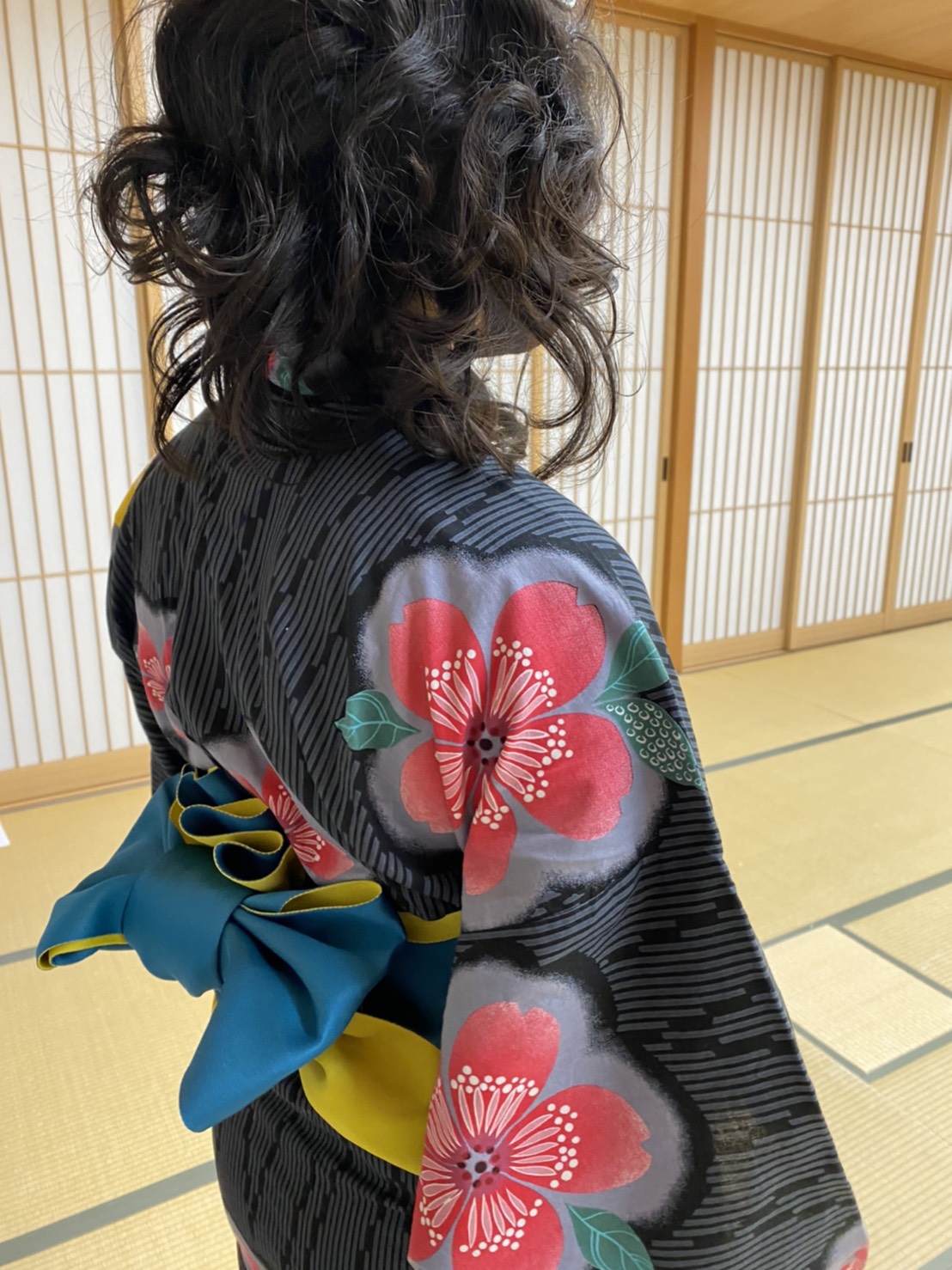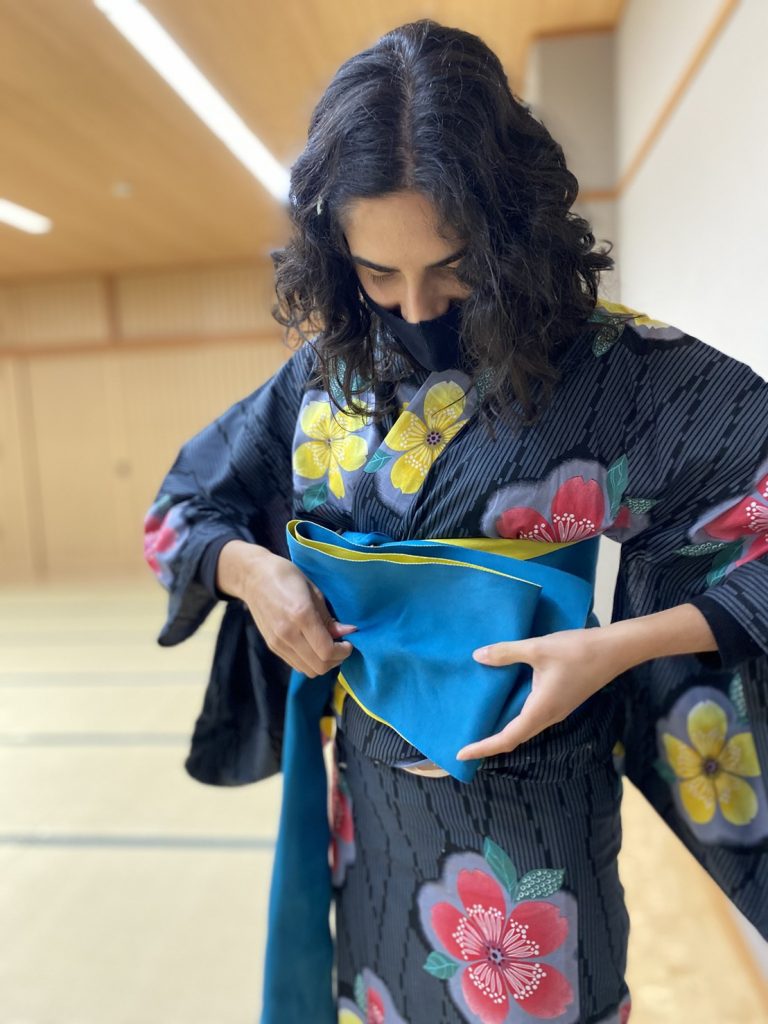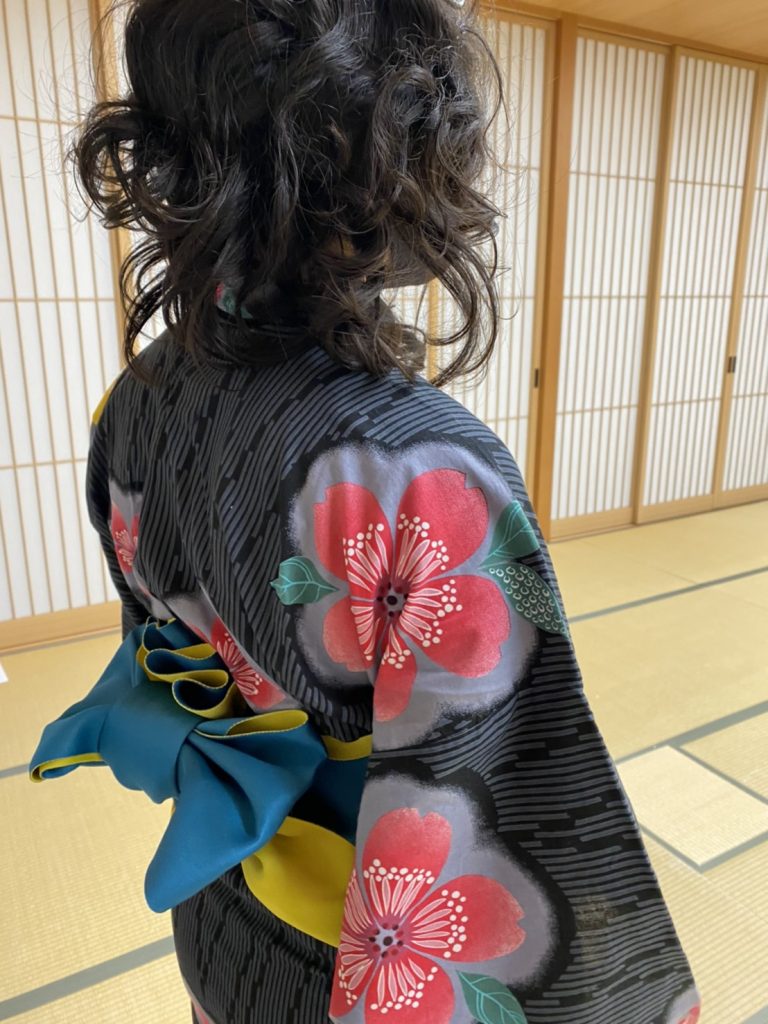This article originally featured in the January 2021 issue of Connect.
Clare Braganza (Fukushima)
Ever tried dancing in a kimono?
The skirt only allows for small steps, and when you add a folding fan in one hand and a surprisingly heavy parasol in the other, suddenly it’s all you can do to remember which foot to slide forwards first. The masters, of course, make this multitasking look effortless. This is Nihon Buyō, a traditional form of Japanese dance.
Hailing from the Meiji Era when Japan was keen on establishing its traditional arts, Nihon Buyō is a mix of geisha aesthetics and kabuki dance forms. Dancers, both male and female, wear different styles of kimono in winter and yukata in summer, along with white tabi socks that have a split toe. In fact, the first challenge of a Nihon Buyō lesson is getting dressed. Many hidden ties keep the kimono in place, and the knot must be crossed in the ‘lucky’ way. Everything has meaning, from the edge of the folding fan—which signifies eternity—to the angle of your body in respect to your outstretched arms.
Nihon Buyō consists of slow, controlled movements. As someone who used to street dance, I thought this would make it easy. How wrong I was! This dance is the ultimate thigh workout. You have to bend your knees and sit deep in your stance, using your core to keep your upper body straight. The best way to achieve this: pretend to sit on a chair, with your back flat against a wall. Now hold that as you move forwards, one step, two, sliding your feet forwards no further than shoulder-width apart.
Skilled dancers make this look effortless, but my legs always shake by the end of class. To make it worse, the fan in your hand shouldn’t move up and down as you dance—you move around the fan. So when your arms point downwards, you bend your knees lower, and when you sweep your fan down and up, you have to get your body beneath it. The aesthetic looks elegant and effortless, but in reality the dancers must have cores of steel.
But the dance is not purely physical. A lot of the traditional songs have a narrative. So far, I have performed a dance around a summer evening in Kyōto—featuring cutting tōfu and fanning myself on a riverbank—and a boat trip beneath Mt. Fuji. The fan acts as your trusty prop, representing a mountain when you open it above your head, or a lotus flower unfolding in your hands. It even becomes a punting stick as you push your boat across the lake. My teacher always stresses the importance of this narrative. As you dance, you have to imagine the scenes so deeply that the audience can see that lake, that riverbank, and the tōfu you cut with your hands. When skilled dancers perform, it really is a work of art.
As for me, I’ll probably never look truly effortless, but I can now understand the deeper cultural meaning behind a lot of Japanese symbolism and customs—something which regularly impresses my Japanese coworkers. If you want to learn a traditional Japanese art and get the bonus of a thigh workout, look no further than Nihon Buyō.
Clare is a second-year JET in the inaka of Fukushima, but she’s originally from England. When not editing [CONNECT]’s Wellness section, she spends her days reading fantasy books, writing stories, and hiking up random mountains in northern Japan. You can follow her travels here.







